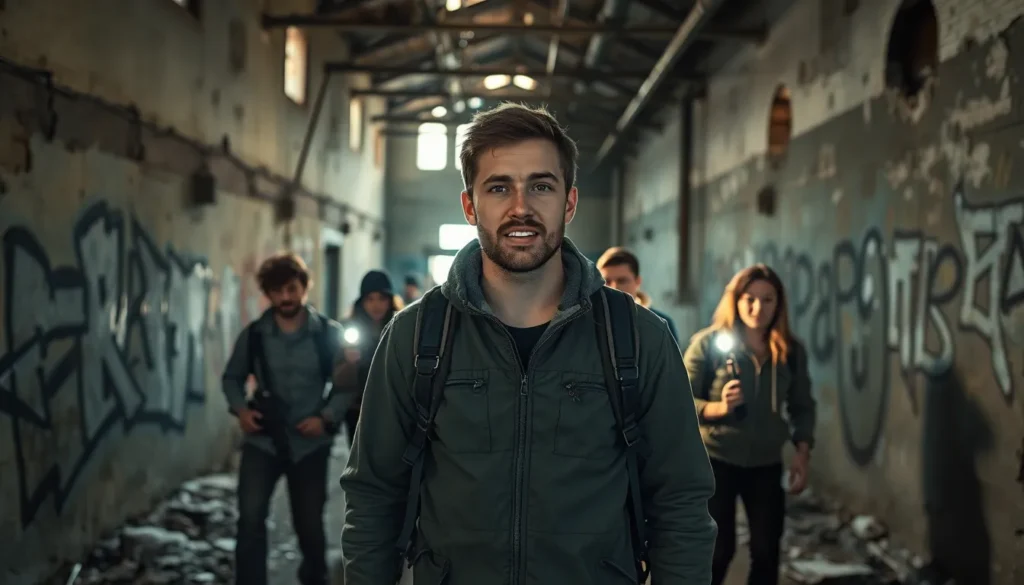Table of Contents
ToggleUrban exploration, often referred to as urbex, captivates adventurers and thrill-seekers alike. It involves discovering and documenting abandoned buildings, hidden tunnels, and forgotten places that tell stories of a city’s past. This unique blend of history, adventure, and photography draws people into the urban landscape, revealing beauty in decay.
As explorers navigate through these sites, they encounter remnants of history, art, and culture that often go unnoticed by the average passerby. Each location offers a glimpse into a world where nature reclaims man-made structures, creating a hauntingly beautiful contrast. Urban exploration not only satisfies curiosity but also fosters a deeper appreciation for the urban environment and its hidden gems.
What Is Urban Exploration?
Urban exploration, known as urbex, involves the investigation of abandoned spaces, historical sites, and forgotten structures within urban environments. Explorers seek to reveal untold stories and capture the aesthetic of decay as nature intertwines with man-made environments. Sites commonly explored include deserted factories, railway stations, hospitals, and residential buildings.
Participants document their experiences through photography or videography, sharing findings with a broader audience. This documentation fosters a deeper connection to the urban landscape by highlighting its hidden narratives. Urban exploration encourages appreciation for local history and architecture, presenting a contrast between the vibrancy of past human activity and current stillness. Explorers often follow safety protocols and promote ethical considerations, advocating for respectful interactions with these fragile locations and their legacies.
The History of Urban Exploration

Urban exploration, or urbex, traces its roots back to early adventures in abandoned structures, often driven by curiosity and a desire for discovery. This practice has evolved significantly, reflecting changes in society and technology.
Early Beginnings
Urban exploration began in the late 20th century as a subculture, with enthusiasts seeking out abandoned buildings, tunnels, and factories. Influenced by punk culture and anti-establishment sentiments, early explorers ventured into these forgotten spaces to uncover hidden histories. In regions like New York City and Detroit, explorers documented their findings, highlighting urban decay and the remnants of past industries.
Evolution Over Time
Urban exploration evolved in the 1990s, with the rise of the internet facilitating the sharing of experiences through blogs and forums. Online communities emerged, connecting explorers worldwide and promoting the exchange of tips, locations, and photography techniques. As technology progressed, social media platforms allowed explorers to reach larger audiences, transforming urban exploration into a recognized and popular activity. Today, individuals engage in urbex not only for adventure but also for artistic expression, showcasing the beauty of decay and raising awareness about the stories behind abandoned spaces.
The Thrill of Urban Exploration
Urban exploration, or urbex, offers a unique rush through the discovery of forgotten spaces. Explorers engage with the remnants of history, creating exhilarating experiences that captivate their senses and push their boundaries.
Adrenaline Rush
Experiencing urban exploration often triggers an adrenaline rush linked to the thrill of navigating through unknown territory. Explorers face various challenges, such as tight spaces, unstable structures, and unpredictable surroundings. Encountering these obstacles heightens excitement, maintaining an intense connection to the environment. This sense of danger complements the unique aesthetic of abandoned sites, prompting explorers to capture the moment through photography and video.
Sense of Adventure
Urban exploration embodies a profound sense of adventure. Explorers venture into derelict buildings, forgotten factories, and hidden tunnels, uncovering stories layered within the city. This quest for discovery cultivates curiosity about history and architecture. Engaging with the urban landscape fosters an appreciation of overlooked beauty, revealing a different perspective that enriches their understanding of the environment. Through exploration, individuals often forge connections with others who share the same interests, enhancing the social aspect of this thrilling pursuit.
Risks and Safety Measures
Urban exploration involves inherent risks. Understanding these dangers and implementing safety measures is crucial for a secure and enjoyable experience.
Common Dangers
- Structural Instability: Abandoned buildings often harbor weak floors, crumbling walls, and compromised roofs. Explorers face risks of falls or injury from collapsing structures.
- Hazardous Materials: Many abandoned sites contain toxic substances, including asbestos and lead paint. Exposure can lead to serious health issues, making protective gear essential.
- Legal Consequences: Trespassing laws vary by location, and urban explorers may face legal ramifications when entering private properties without permission.
- Environmental Hazards: Wild animals, insects, and vegetation can pose threats in urban exploration sites. Dangers such as bites or stings from pests may arise unexpectedly.
- Isolation: Exploring remote or abandoned locations may result in physical separation from help. Explorers should prepare for medical emergencies or accidents without immediate assistance.
Tips for Safe Exploration
- Research Locations: Conduct thorough research on sites before visiting. Check legal regulations, nearby hazards, and structural safety reports to ensure a responsible approach.
- Wear Protective Gear: Equip oneself with appropriate safety gear, including gloves, masks, sturdy footwear, and safety goggles. This minimizes exposure to hazardous materials and provides physical protection.
- Explore with a Partner: Always explore in pairs or groups. This ensures mutual support during unexpected incidents and enhances safety through collective vigilance.
- Carry Essential Supplies: Pack a first aid kit, flashlight, and a fully charged cellphone. These items assist in emergencies, improving the chances of a safe return.
- Stay Aware of Surroundings: Maintain focus on the environment at all times. Awareness helps identify potential dangers and navigate safely through unfamiliar terrain.
Popular Urban Exploration Locations
Urban exploration locations provide unique insights into a city’s forgotten past. Explorers seek out diverse sites, each offering distinct experiences and opportunities for discovery.
Abandoned Buildings
Abandoned buildings attract urban explorers due to their historical significance and architectural beauty. Common examples include old factories, hotels, and schools. Cities like Detroit, Michigan, showcase a wealth of these structures, like the Michigan Central Station, which serve as powerful reminders of urban decline and resilience.
Chicago, Illinois, also features notable abandoned sites, such as the Old Cook County Hospital. These spaces often reveal remnants of life and culture, making them rich for exploration and documentation. Explorers find beauty in decay through photography, showcasing peeling paint and rusting metal.
Underground Tunnels
Underground tunnels offer a different dimension for urban exploration. These hidden pathways, often part of old transportation systems or utility networks, invite discovery into a city’s subterranean history. For example, the abandoned subway tunnels in New York City and the extensive tunnel systems in Seattle reveal the unseen layers of urban life.
Explorers often venture into these dark passages, uncovering historical artifacts and unique graffiti, creating an adrenaline-fueled experience. Locations like the Catacombs of Paris add an eerie yet fascinating aspect to urban exploration, blending history with the thrill of adventure.
Urban exploration offers a unique lens through which to view the hidden narratives of cities. By venturing into abandoned spaces and forgotten sites, explorers uncover stories that often go untold. This thrilling pursuit not only highlights the beauty in decay but also fosters a deeper connection to the urban landscape.
While the adventure comes with inherent risks, proper safety measures and ethical practices ensure a responsible exploration experience. As urban explorers continue to document their findings, they contribute to a growing appreciation for the history and architecture that shape our environments. The journey of urban exploration is one of discovery and connection, inviting individuals to engage with the past while embracing the thrill of the unknown.







